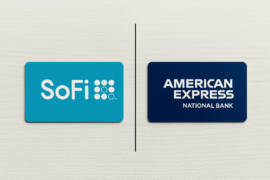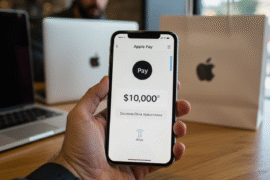This article may contain references to products or services from one or more of our advertisers or partners. We may receive compensation when you click on links to those products or services. Nonetheless, our opinions are our own.
If you are looking for a good savings account that offers high yield returns, you may have come across Marcus and Apple’s high yield savings accounts. These two names have emerged as some of the most popular choices among savers in recent years. But what sets them apart? How do they compare? And can they really help you reach your financial goals? In this post, we will take a closer look at Marcus vs. Apple savings accounts, exploring their features, benefits, and drawbacks so that you can make an informed decision on which one to choose. We will also break down how high yield savings accounts work and whether it is the right option for your financial needs. So, let’s dive in!
Understanding High Yield Savings Accounts: Marcus vs. Apple
When it comes to high-yield savings accounts, both Marcus and Apple offer competitive interest rates that can help you grow your money. Marcus offers 4.30% APY. Apple Savings Account offers 4.15% APY.
Marcus, backed by Goldman Sachs, is a reputable financial institution with a range of services beyond just savings accounts. On the other hand, Apple’s savings account is integrated with their Apple Card and Wallet app, providing a seamless banking experience for Apple users. Apple’s savings account also comes with additional perks like daily cash rewards. Whether you’re looking for a trusted bank account or prefer the convenience of managing your finances through your iPhone, both Marcus and Apple have something to offer. Consider your needs and preferences before deciding on a new savings account.
The Birth of Apple’s High Yield Savings Account
In April, Apple made a significant move into the financial services industry by launching its own high-yield savings account. Designed to complement the Apple Card and Apple Cash features, this new account offers customers a safe and secure place to deposit their funds. Partnering with Goldman Sachs, Apple ensures that the account is FDIC-insured, providing peace of mind to users. This collaboration also allows Apple to tap into the expertise of a renowned financial institution. The arrival of Apple’s high-yield savings account created quite a stir on Wall Street, signaling the tech giant’s expansion into new territory. With its innovative features and the backing of a trusted partner, Apple’s foray into the world of online savings has caught the attention of both investors and consumers alike.
The Attraction of Marcus High Yield Savings Account
Marcus High Yield Savings Account has become a popular choice for savers due to its attractive features and benefits. One of the key attractions is the higher interest rate offered by Marcus compared to traditional savings accounts. With no monthly fees or minimum balance requirements, Marcus provides a hassle-free banking experience. Managing your account is made easy with their user-friendly online platform, allowing you to access and track your savings anytime, anywhere. The savings dashboard provided by Marcus enables you to monitor your progress and set financial goals effectively. By choosing Marcus, you can enjoy the advantages of a high-yield savings account, including the potential for greater returns on your savings.
Comparing the Features: Marcus vs. Apple
When comparing the features of Marcus and Apple’s high yield savings accounts, several key differences emerge. One notable distinction is that Marcus offers a broader range of financial services beyond just savings accounts. On the other hand, Apple’s savings account is seamlessly integrated with the Apple Card and Wallet app, providing a convenient and user-friendly experience for Apple Card users. In terms of interest rates, Marcus edges out Apple with a higher APY, which can be especially attractive for those looking to maximize their savings. However, Apple’s savings account also offers additional perks such as daily cash rewards, adding another layer of benefits for account holders. Both Marcus and Apple’s savings accounts are FDIC-insured, ensuring the security of funds. Overall, choosing between Marcus and Apple ultimately depends on individual preferences and needs.
How Does the High Yield Savings Account Work?
High yield savings accounts work by allowing savers to earn more interest on their deposits. Both Marcus and Apple’s savings accounts utilize compound interest to maximize earnings. Users can access their funds through online transfers, and automatic deposits and scheduled transfers make it easy to build savings. High yield savings accounts are popular for individuals looking to grow their money.
Is a High Yield Savings Account Right for You?
Considering your financial goals and spending habits, opening a high-yield savings account may be a smart choice. These accounts are ideal for individuals looking to earn more on their savings and prefer a hands-off approach to saving. However, they are not recommended for individuals with high spending habits. Evaluate your needs before deciding if a high-yield savings account is right for you.
What Are the Alternatives to Marcus and Apple High Yield Savings Accounts?
If you’re considering alternatives to Marcus and Apple high-yield savings accounts, there are other options to explore. JPMorgan Chase offers high-yield savings accounts with competitive rates. Bask Bank is another alternative that provides attractive rates on savings accounts. Money market accounts and traditional savings accounts with brick-and-mortar banks can also be considered. Compare the interest rates and features of different banks before making a decision.
Conclusion
In conclusion, both Marcus and Apple offer competitive high yield savings accounts that can help you grow your savings faster. Marcus stands out for its long-standing reputation as a trusted financial institution and its wide range of financial products and services. On the other hand, Apple’s entry into the banking industry brings the convenience of managing your savings through a familiar and user-friendly interface. When choosing between these two options, consider factors such as interest rates, fees, account features, and your personal banking preferences. Ultimately, the right high yield savings account for you will depend on your individual financial goals and needs. Take the time to compare the features and benefits of each account before making a decision.
Frequently Asked Questions
What is a high yield savings account?
A high yield savings account is a type of savings account that offers a higher interest rate compared to traditional accounts. These accounts are typically offered by online banks and have no monthly fees. They can help you earn more money on your savings, although some may have restrictions like minimum balance requirements or limited withdrawals.
How does the interest rate on Marcus and Apple Savings Accounts compare to traditional banks?
The interest rates offered by Marcus and Apple Savings Accounts tend to be higher than those of traditional banks. Marcus currently offers a 4.30% APY, while Apple provides a variable rate that ranges from 4.15% APY. It’s important to consider all factors, including fees and accessibility, when choosing a savings account.
Are there any fees associated with opening and maintaining a high yield savings account?
High yield savings accounts may have fees for opening and maintaining the account. These fees can include monthly maintenance fees or charges for exceeding withdrawal limits. It’s important to carefully read the terms and conditions before opening a high yield savings account and look for options with no or low fees to maximize your earnings.
Can I access my funds easily with a high yield savings account?
High yield savings accounts offer easy access to funds through online and mobile banking options. However, there may be restrictions on how often you can withdraw money. It’s important to review the terms and conditions to understand any fees or limitations before opening an account.

Reviewed and edited by Albert Fang.
See a typo or want to suggest an edit/revision to the content? Use the contact us form to provide feedback.
At FangWallet, we value editorial integrity and open collaboration in curating quality content for readers to enjoy. Much appreciated for the assist.
Did you like our article and find it insightful? We encourage sharing the article link with family and friends to benefit as well - better yet, sharing on social media. Thank you for the support! 🍉
Article Title: Marcus vs Apple Savings Account: High Yield Savings Review
https://fangwallet.com/2023/08/26/marcus-vs-apple-savings-account-high-yield-savings-review/The FangWallet Promise
FangWallet is an editorially independent resource - founded on breaking down challenging financial concepts for anyone to understand since 2014. While we adhere to editorial integrity, note that this post may contain references to products from our partners.
The FangWallet promise is always to have your best interest in mind and be transparent and honest about the financial picture.
Become an Insider

Subscribe to get a free daily budget planner printable to help get your money on track!
Make passive money the right way. No spam.
Editorial Disclaimer: The editorial content on this page is not provided by any of the companies mentioned. The opinions expressed here are the author's alone.
The content of this website is for informational purposes only and does not represent investment advice, or an offer or solicitation to buy or sell any security, investment, or product. Investors are encouraged to do their own due diligence, and, if necessary, consult professional advising before making any investment decisions. Investing involves a high degree of risk, and financial losses may occur including the potential loss of principal.
Source Citation References:
+ Inspo












































